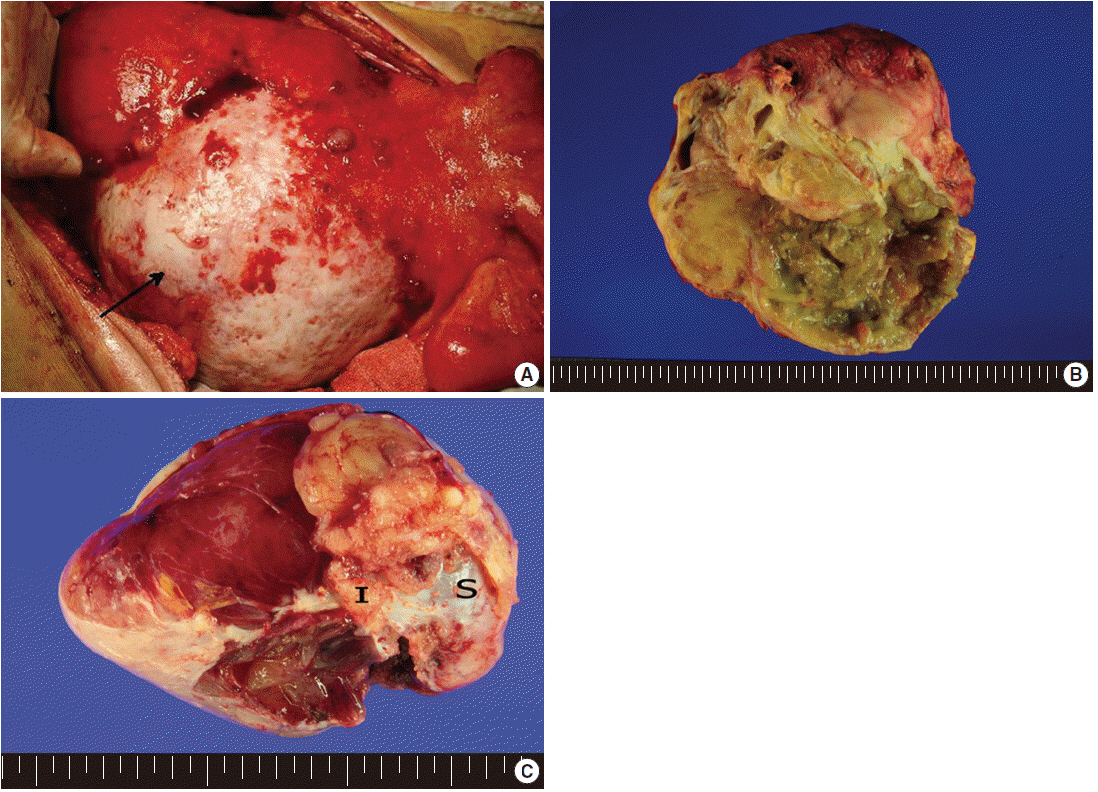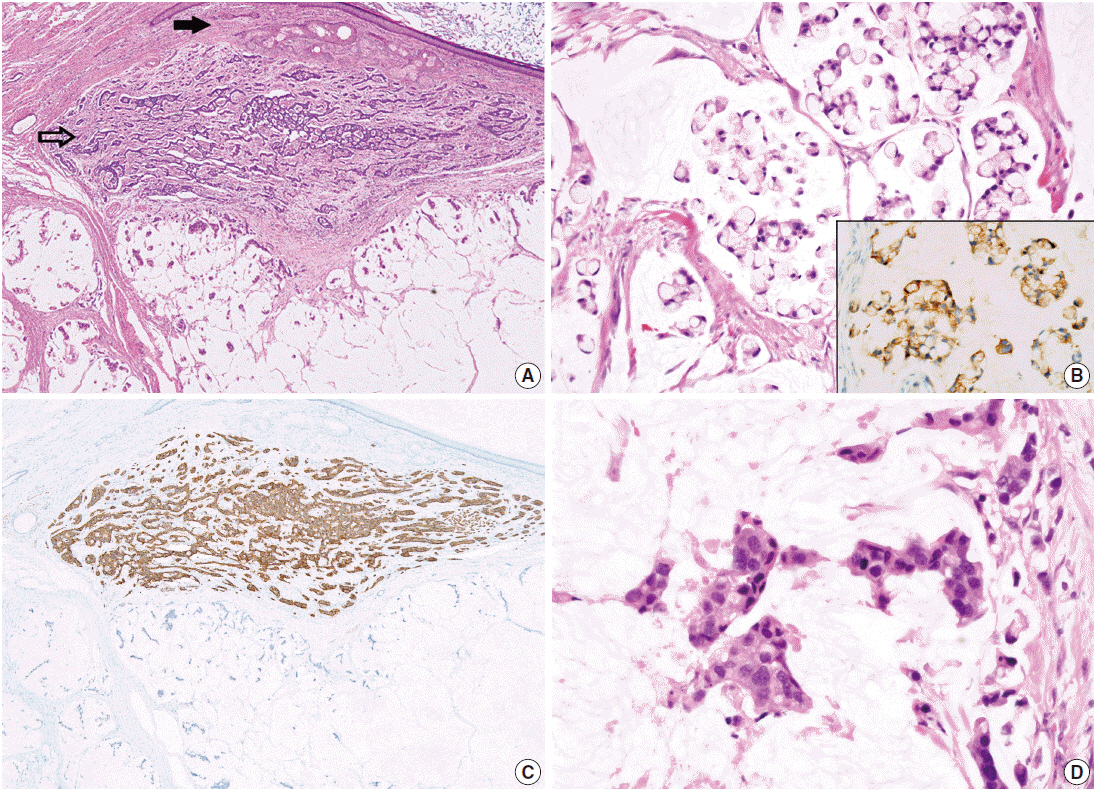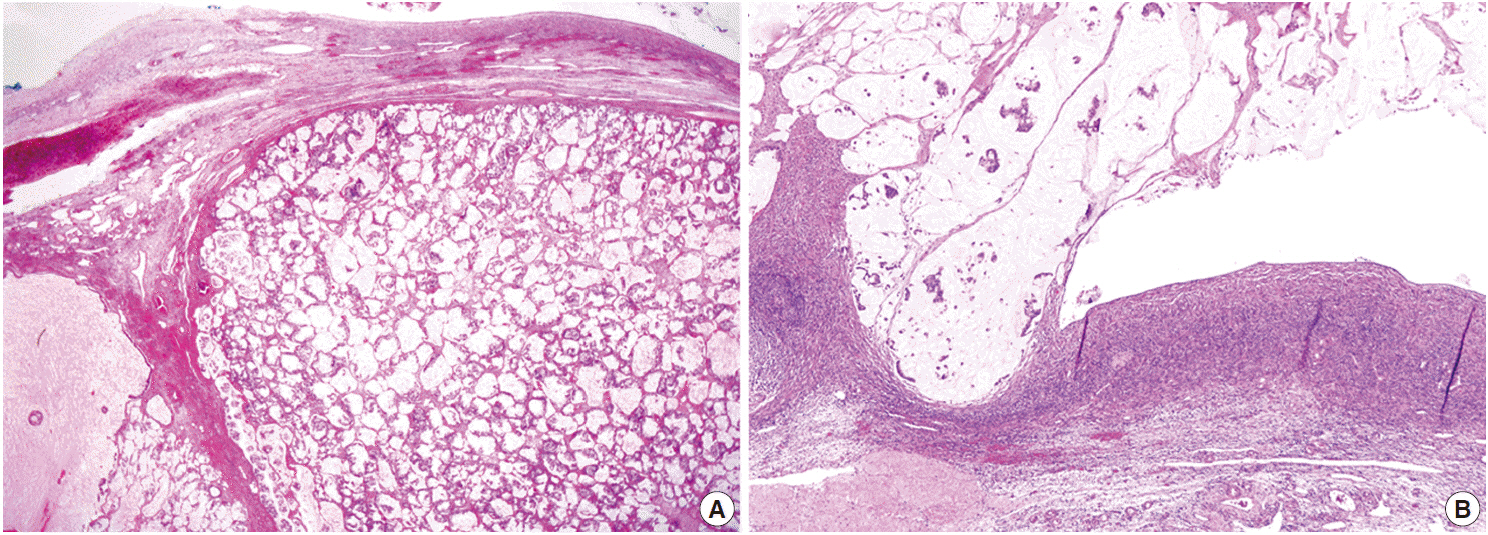J Pathol Transl Med.
2015 Jan;49(1):61-65. 10.4132/jptm.2014.09.17.
Mixed Carcinoid-Mucinous Adenocarcinoma Arising in Mature Teratoma of Mesentery
- Affiliations
-
- 1Department of Pathology, Asan Medical Center, University of Ulsan College of Medicine, Seoul, Korea. krkim@amc.seoul.kr
- KMID: 2381354
- DOI: http://doi.org/10.4132/jptm.2014.09.17
Abstract
- No abstract available.
MeSH Terms
Figure
Reference
-
1. Kurman RJ, Ronnett BM. Blaustein’s pathology of the female genital tract. 6th ed. New York: Springer;2011. p. 877.2. Papakonstantinou E, Iavazzo C, Hasiakos D, Kleanthis CK, Fotiou S, Kondi-Pafiti A. Extraovarian mature cystic teratoma of the mesentery: a case report and literature review. Clin Exp Obstet Gynecol. 2011; 38:291–3.3. Lancaster KJ, Liang CY, Myers JC, McCabe KM. Goblet cell carcinoid arising in a mature teratoma of the mediastinum. Am J Surg Pathol. 1997; 21:109–13.
Article4. Chetty R, Klimstra DS, Henson DE, Albores-Saavedra J. Combined classical carcinoid and goblet cell carcinoid tumor: a new morphologic variant of carcinoid tumor of the appendix. Am J Surg Pathol. 2010; 34:1163–7.
Article5. Toumpanakis C, Standish RA, Baishnab E, Winslet MC, Caplin ME. Goblet cell carcinoid tumors (adenocarcinoid) of the appendix. Dis Colon Rectum. 2007; 50:315–22.
Article6. Turaga KK, Pappas SG, Gamblin T. Importance of histologic sub-type in the staging of appendiceal tumors. Ann Surg Oncol. 2012; 19:1379–85.7. van Eeden S, Offerhaus GJ, Hart AA, et al. Goblet cell carcinoid of the appendix: a specific type of carcinoma. Histopathology. 2007; 51:763–73.
Article8. Abrego D, Ibrahim AA. Mesenteric supernumerary ovary. Obstet Gynecol. 1975; 45:352–3.9. Kearney MS. Synchronous benign teratomas of the greater omentum and ovary: case report. Br J Obstet Gynaecol. 1983; 90:676–9.10. Lee KR, Young RH. The distinction between primary and metastatic mucinous carcinomas of the ovary: gross and histologic findings in 50 cases. Am J Surg Pathol. 2003; 27:281–92.
- Full Text Links
- Actions
-
Cited
- CITED
-
- Close
- Share
- Similar articles
-
- A Case of Carcinoid Tumor and Low Grade Mucinous Adenocarcinoma Arising in Ovarian Mature Cystic Teratoma
- A Case of Intestinal Type Mucinous Adenocarcinoma and Strumal Carcinoid Tumor arising in One of Bilateral Mature Cystic Teratoma of the Ovary
- A Case of Adenocarcinoma Arising in Mature Cystic Teratoma of the Ovary
- Primary Carcinoid Tumor Arising in a Mature Teratoma of the Testis: A Case Report
- A Case of Advanced Squamous Cell Carcinoma Arising in Mature Cystic Teratoma of the Ovary




